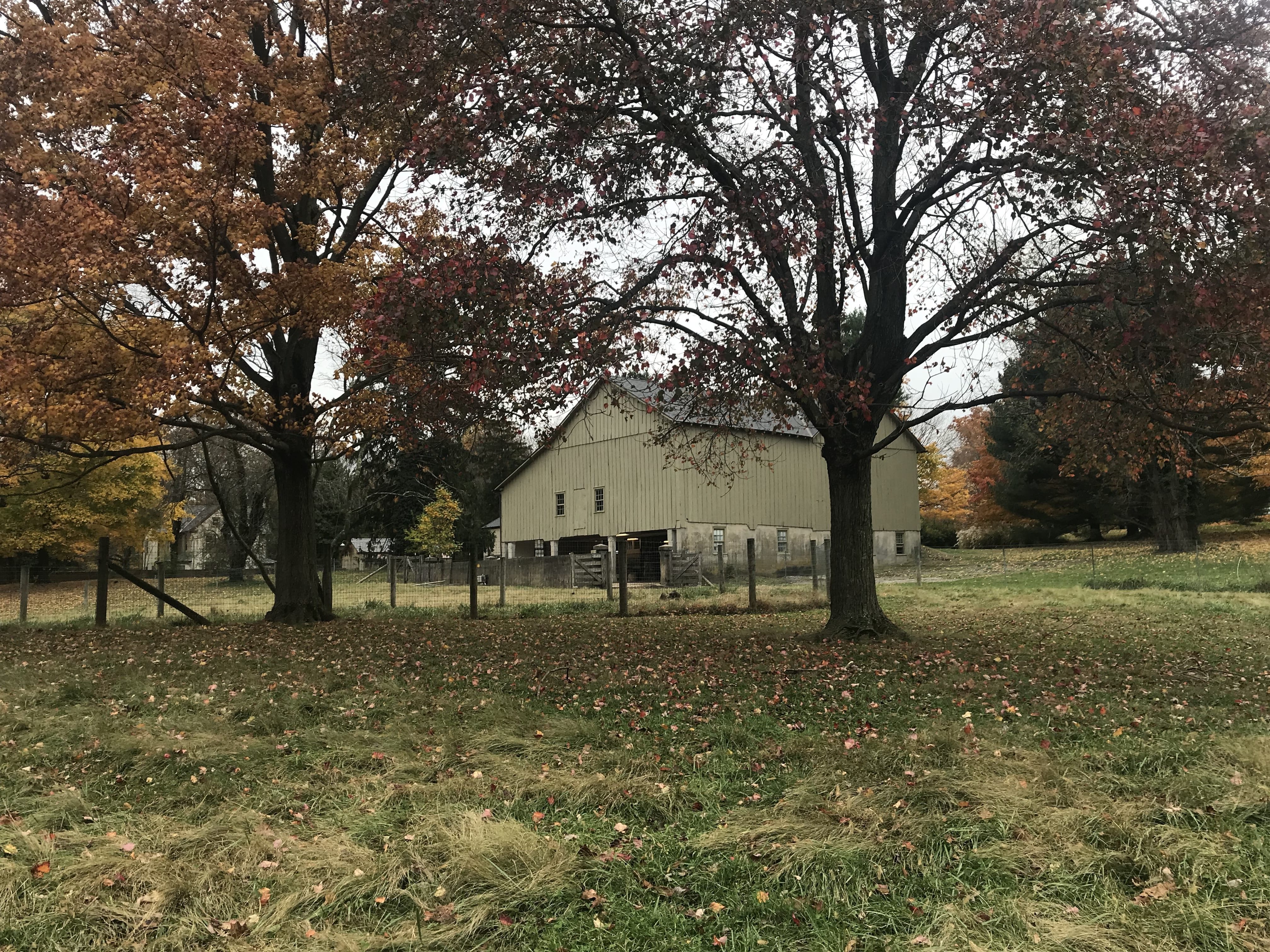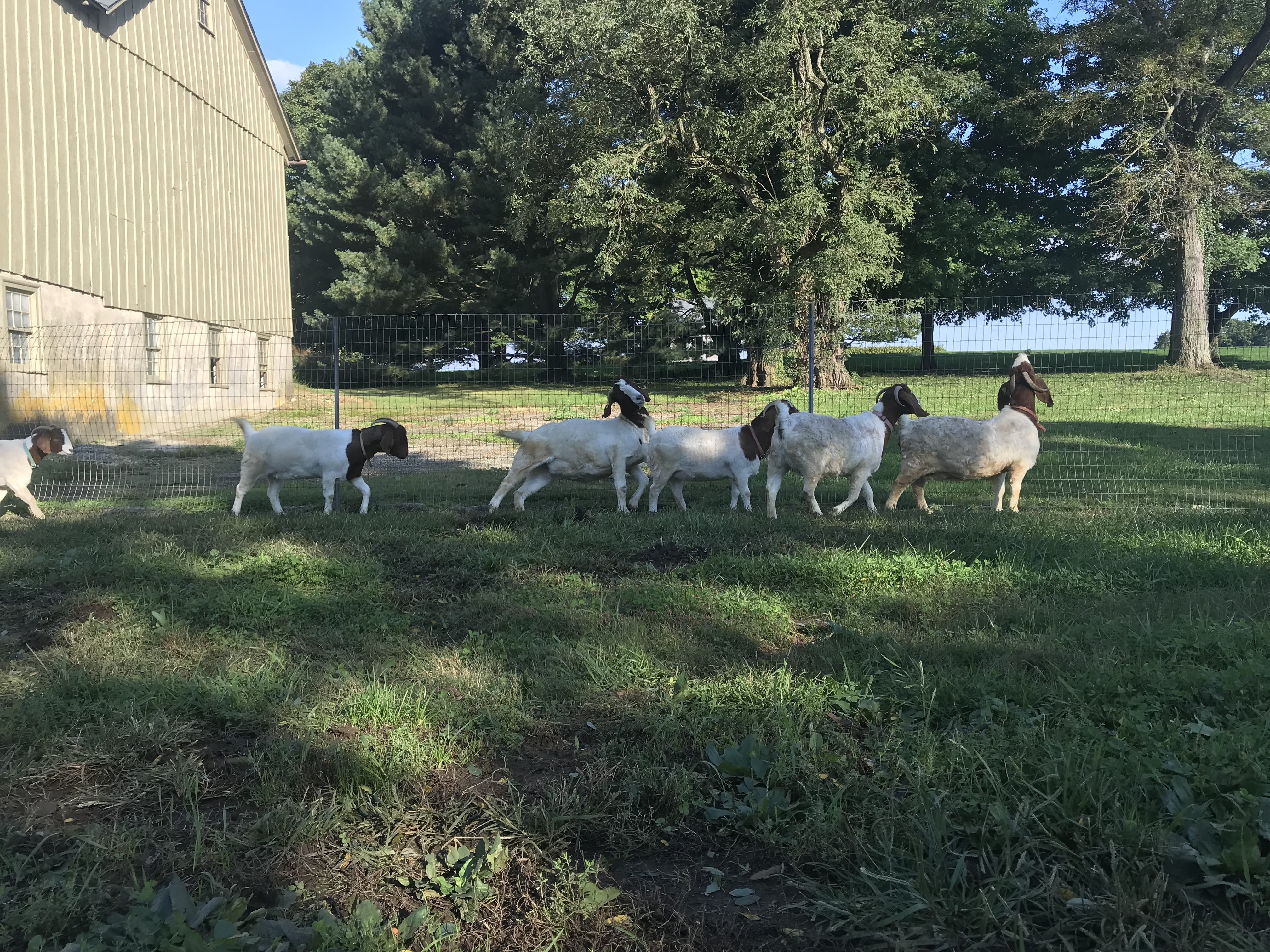Going With the Goats
Since the fall semester began, I’ve spent my Friday mornings with twelve of Winterthur’s permanent residents. My Material Culture courses and quality time in the Winterthur collection are exposing me to incredible objects beyond my wildest expectations, but it’s nice to get some educational perspective from a group who can share unique on-the-ground experience. They’re a friendly, curious bunch and a little impatient when they don’t get their breakfast quickly enough for their liking. I should also probably mention that these residents consist of six goats and six merino sheep.
There’s a whole team of volunteers responsible for Winterthur’s small but mighty herd, and I was lucky enough to snag a volunteer shift when I started this year. I make sure the goats have their breakfast (and occasionally some carrots) and then release the whole crew out into the pasture so they can get to grazing while I clean out the barn and refresh their water. Winterthur’s goats and sheep live in the barn adjacent to the main entrance, so by the time visitors start driving in, they can glimpse the herd munching away or climbing on their stump piles. I grew up on a farm, so the work isn’t unfamiliar to me, but I find working with my hands a particularly rewarding counter-balance to my weekly academic work.
Winterthur is no stranger to animals on the estate; one of Henry du Pont’s greatest loves (aside from his American decorative arts collecting and horticulture) was his dairy farm operation and Holstein cattle breeding. As a student I spend the bulk of my hours in the house or the gardens, but my volunteer shift with the goats and sheep reminds me just how crucial agriculture was to du Pont’s routine and the daily life of Winterthur. I can just picture the movement of the cow herds heading inside the barns for their daily milking, regardless of weather, or the sounds and smells of farm life rolling down from the Dairy Barn hills to the house below.
If I have time, I try to walk some of the pasture with the herd in the morning, traversing the same worn animal paths they follow each day. As it turns colder, the goats are growing thicker coats, but all in all they seem unphased by the changing seasons around them. They’ve seen them before, and they’ll see them again. As a student I spend a good amount of my time in a house whose residents have long past, studying objects who haven’t felt hands intended to use them in many years, and that’s important work that I enjoy. But on Friday mornings, I’m immersed in a living landscape, inside a working barn with animals who go about their daily routines on the grounds. Sometimes we all need a reminder that Winterthur’s landscape is just as telling as its collection, and close looking can happen underneath 18th century sideboards and between clumps of pasture grass.






Love this!